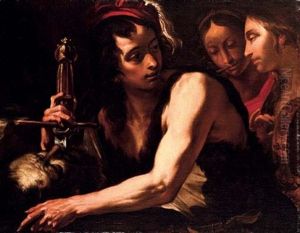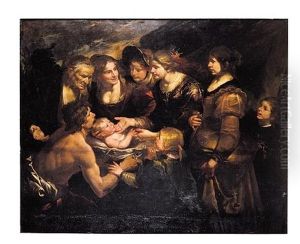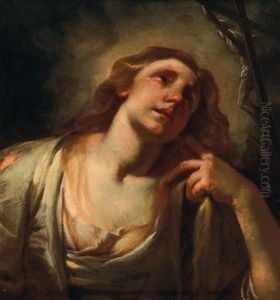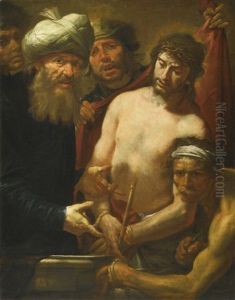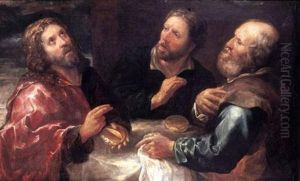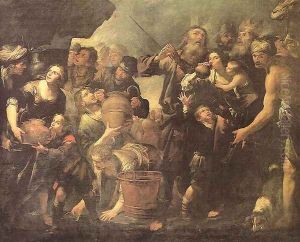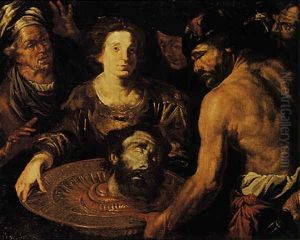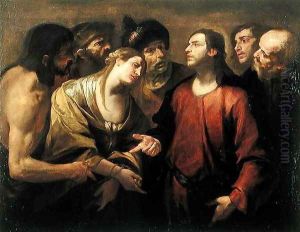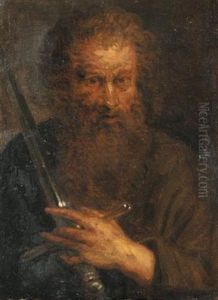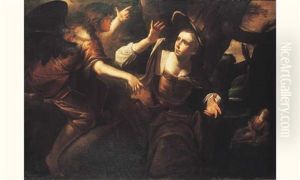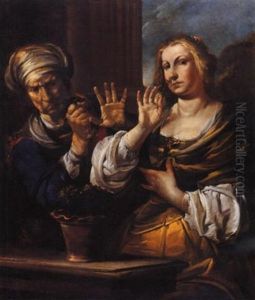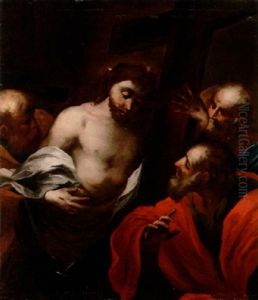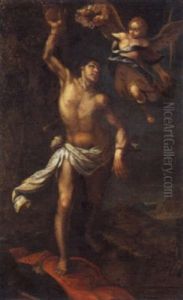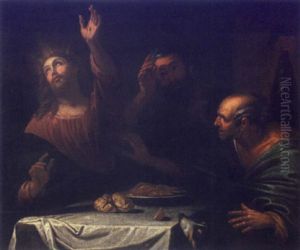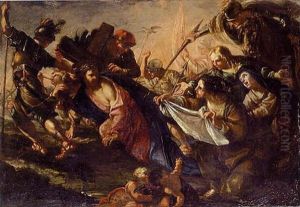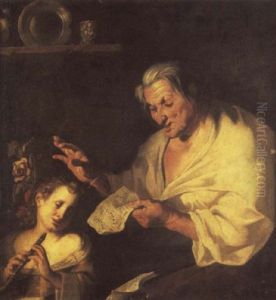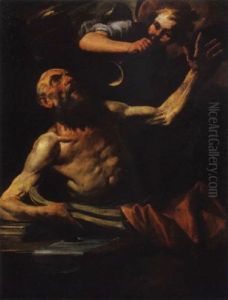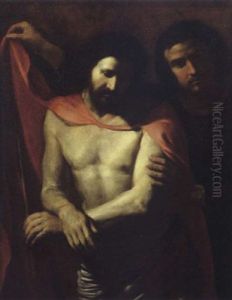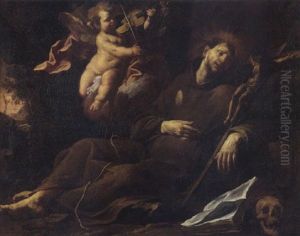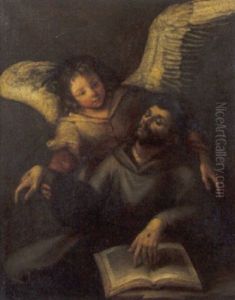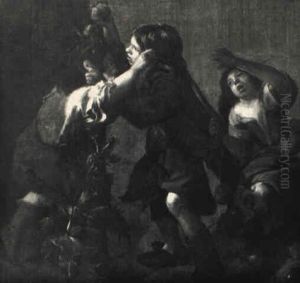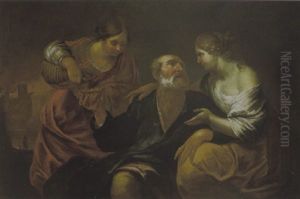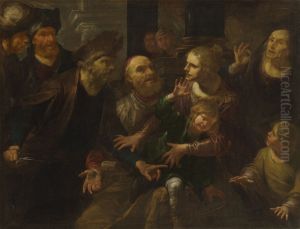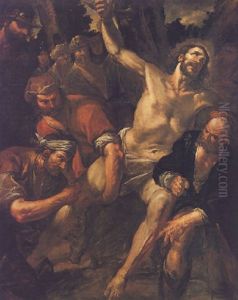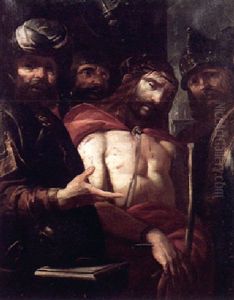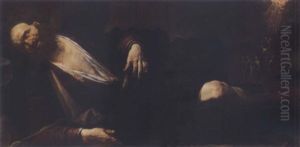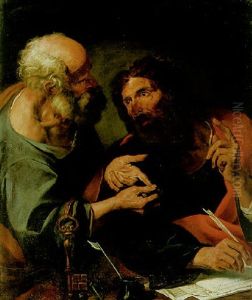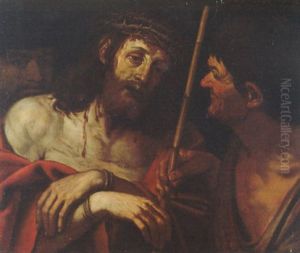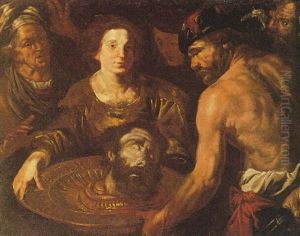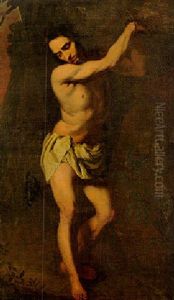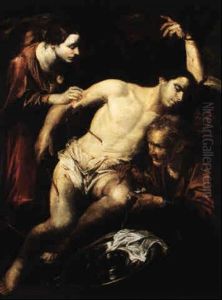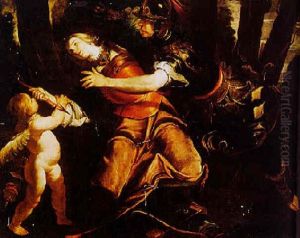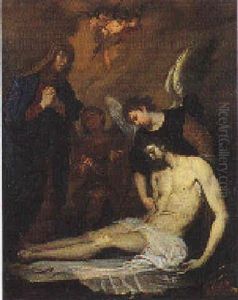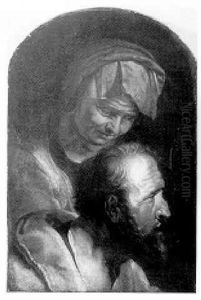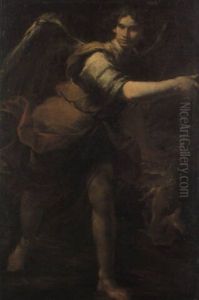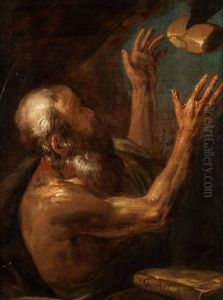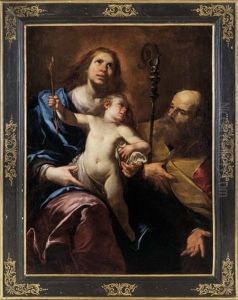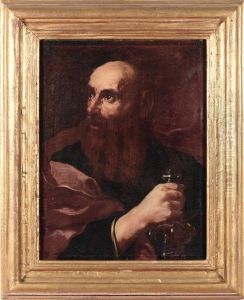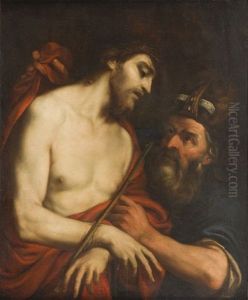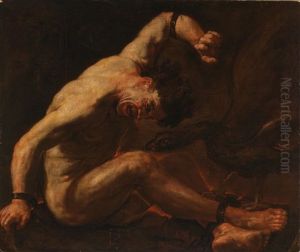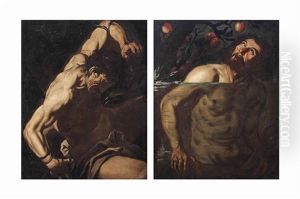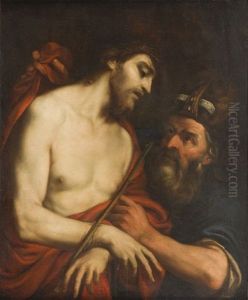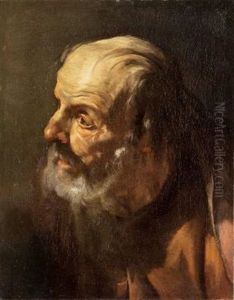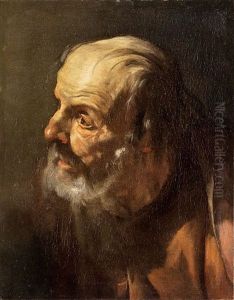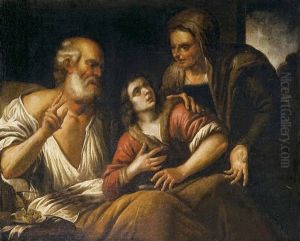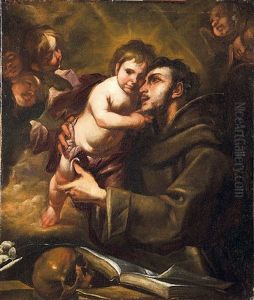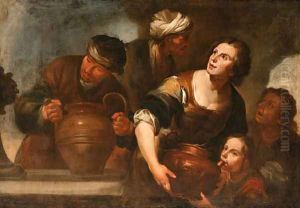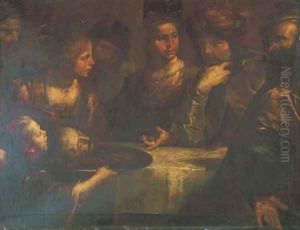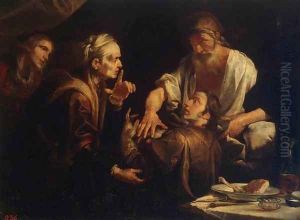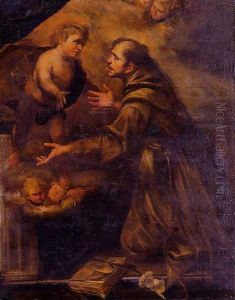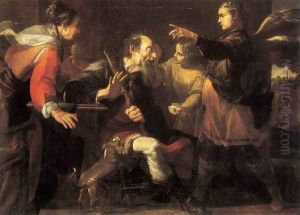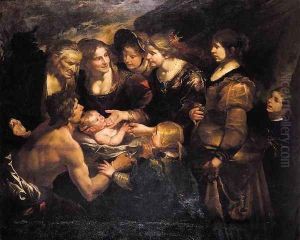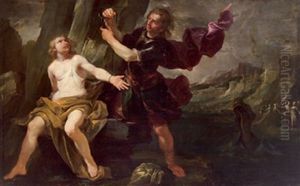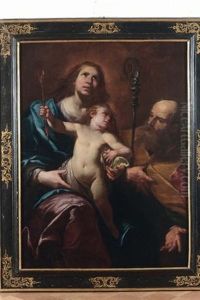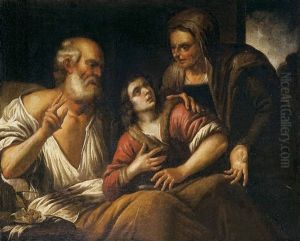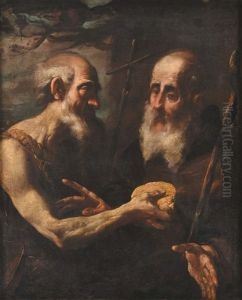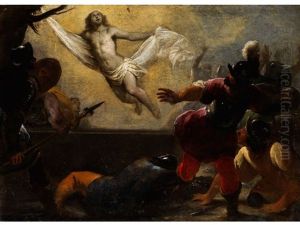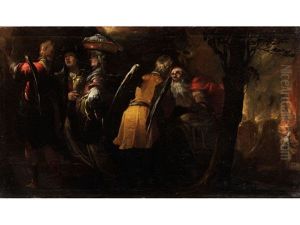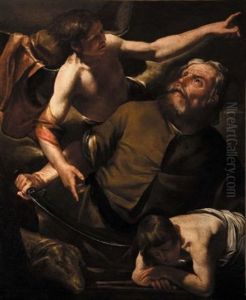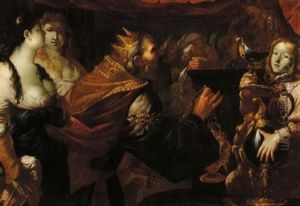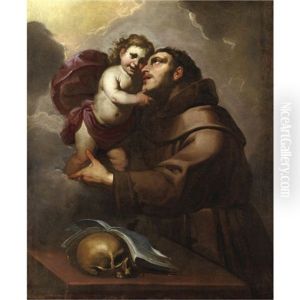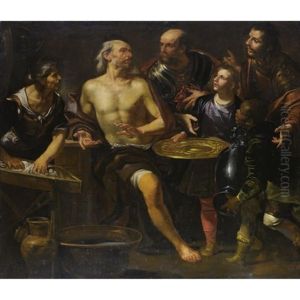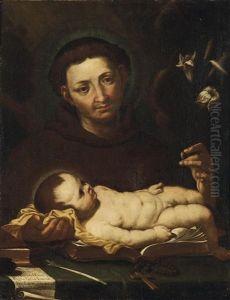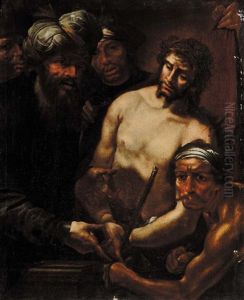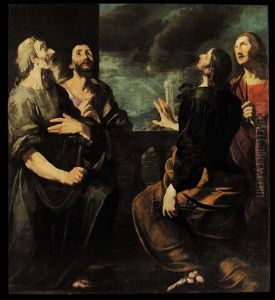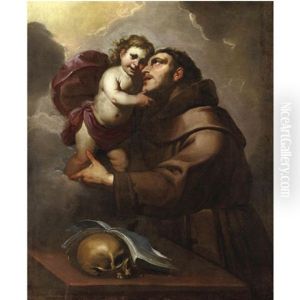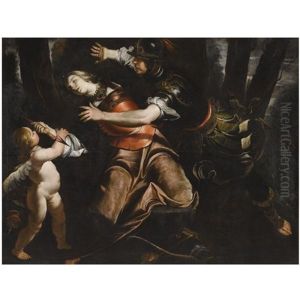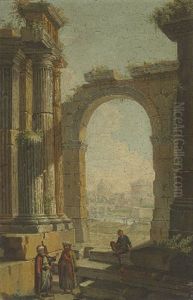Gioacchino Assereto Paintings
Gioacchino Assereto was an Italian Baroque painter born in Genoa in 1600. His artistic career flourished during a time characterized by significant artistic development in Europe, coinciding with the life and work of other notable artists such as Caravaggio, whose style influenced many of his contemporaries, including Assereto.
Assereto's upbringing and artistic training are not thoroughly documented, but it is known that he was initially a pupil of Andrea Ansaldo, a prominent Genoese painter of the time. Assereto's early works exhibit a naturalistic approach, and he is noted for his dramatic use of chiaroscuro, a technique that employs strong contrasts between light and dark to achieve a sense of volume and to add a dramatic effect to paintings. This technique was pioneered by Caravaggio and became a hallmark of Baroque painting.
Throughout his career, Assereto developed a robust and expressive style, often depicting religious and historical subjects. One of his most celebrated works is 'The Lamentation over the Dead Christ', which showcases his ability to convey intense emotion and his mastery of the human form. His work is characterized by powerful expressions, vigorous brushwork, and a rich palette, which contributed to his reputation as one of the leading Genoese painters of his time.
In addition to religious works, Assereto also painted a number of secular subjects and was known for his depictions of scenes from popular plays of the period, which were unusual for the time and demonstrated his narrative abilities. His paintings often feature dramatic gestures and expressions that capture moments of tension and emotion.
Gioacchino Assereto's contributions to Baroque art were significant, and his works can be found in various museums and collections around the world. His influence extended to other artists within the Genoese school and beyond. Despite the recognition he received during his lifetime, his name is not as widely recognized as some of his contemporaries. He continued to paint until his death in 1649, leaving behind a body of work that continues to be studied and appreciated for its emotional power and artistic skill.
